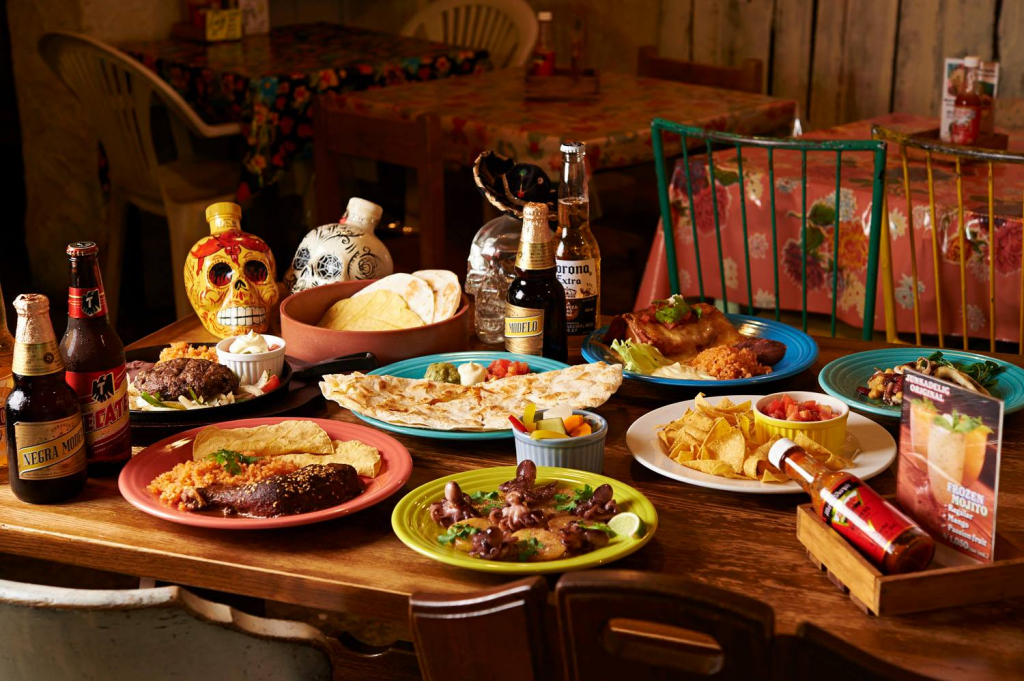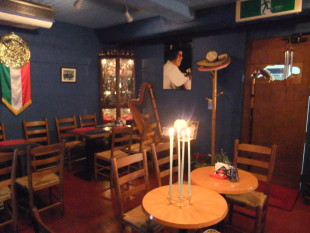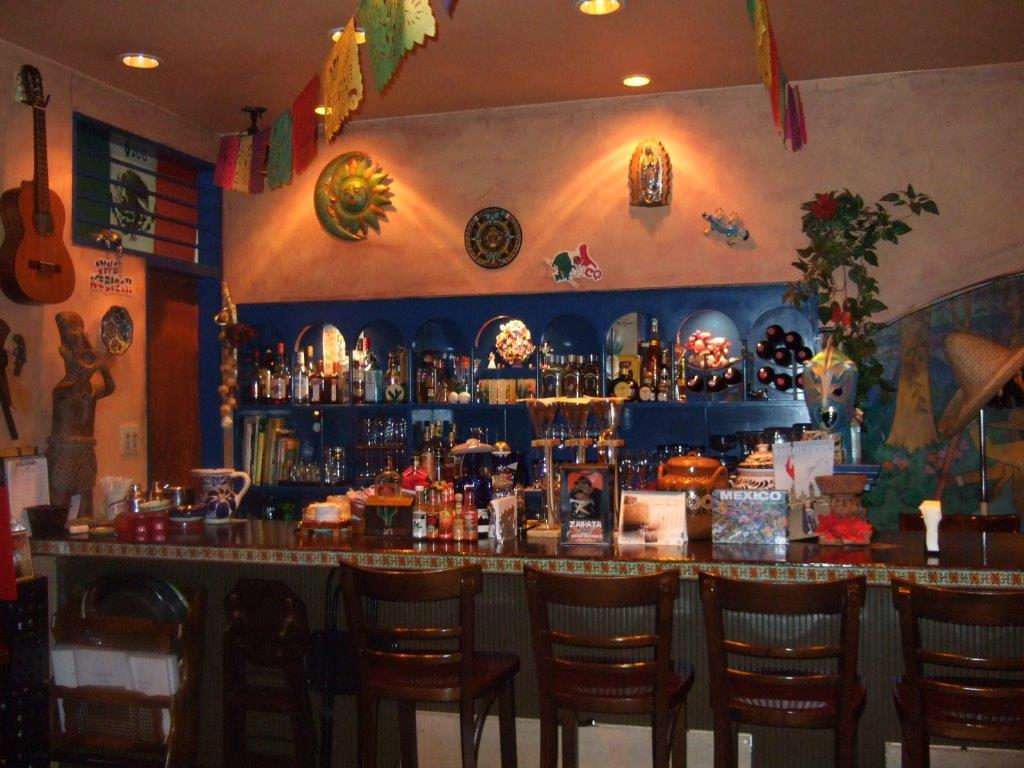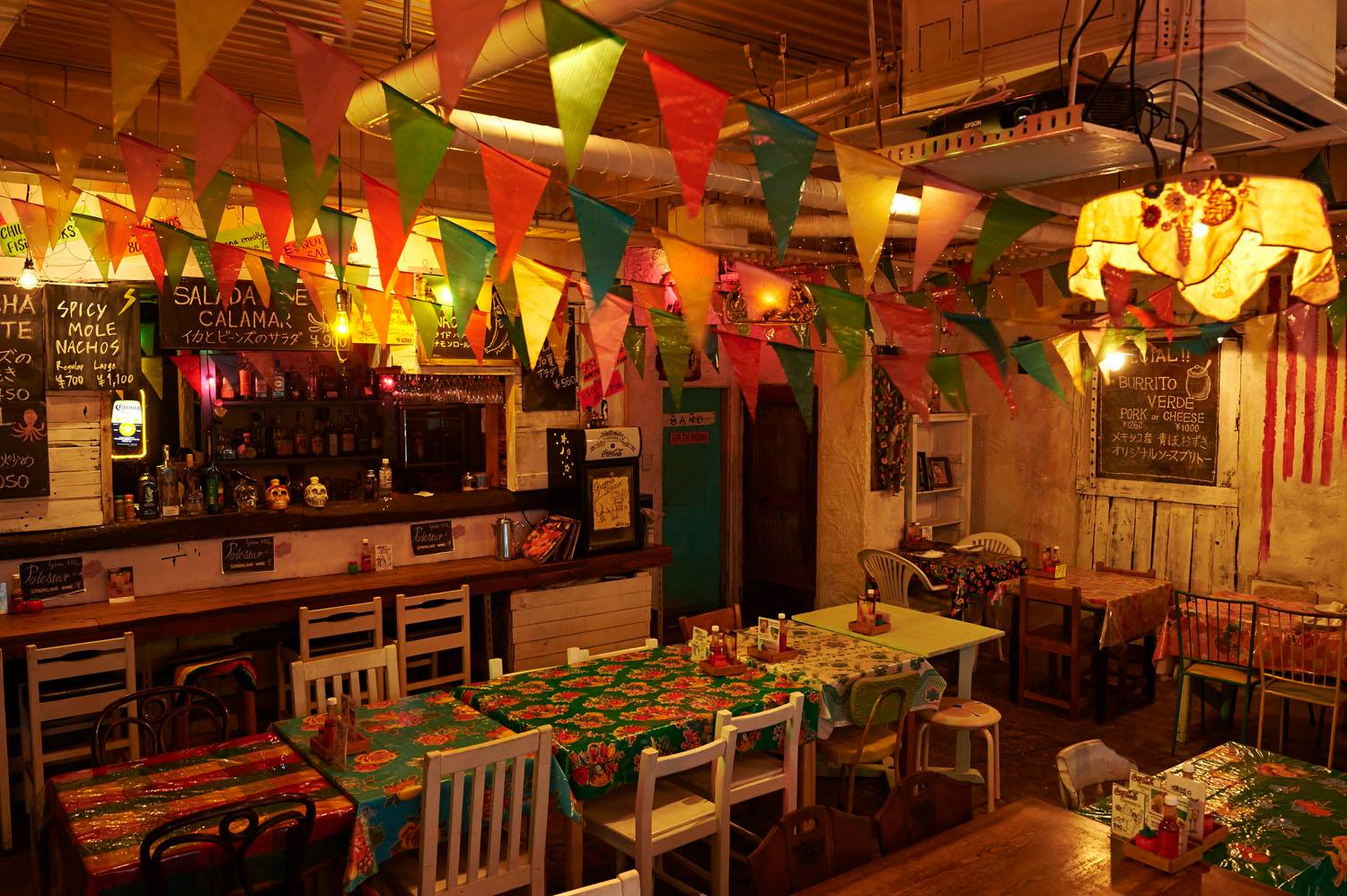OK, let’s be honest. Cinco de Mayo is much more of a Mexican-American holiday than it is a Mexican holiday—the big day for U.S.’s neighbor to the south is September 16. But let’s not be too snooty: any excuse to get a taste of Mexican food is good enough for us. Here are four spots to check out if you find yourself craving a bit of sabor.
By Sarah Custen
Loco Popo
Yotsuya
Monday to Saturday 11:30–14:00, 17:30–22:30 (closed Sundays)
03-5357-7013
www.locopopo.jp
BURRITOS. The hand-held comfort food is cheap and commonplace in the U.S., but a simple, straightforward burrito can be hard to come by in Japan, leaving many expats longing (and then binging on visits to the homeland).
Enter Loco Popo, where ¥1000 or less will get you a familiar, foil-wrapped taste of the States. “I mean, this has been an idea since I first moved here (14 years ago),” says Texas-born co-owner Jeremy Hyatt. “When there was no concept of burritos being here.”
Three years ago Hyatt met Jun Hirano, a California native and Cordon Bleu-trained chef, and years of scheming and dreaming with roommates and buddies turned into a 15-seat Cali-Mex fusion burrito joint, tidily tucked away in Yotsuya, a bright cozy space with free Wifi and smoke-free air.
Hirano’s varied range of cooking abilities translate into “exciting, authentic mexican creations,” according to Hyatt: hand-cut, crunchy tortilla chips and thick, biscuit-like corn tortillas—made daily—along with cochinitas (Mexican pulled pork) and fresh red and green salsa. A plate of nachos at Loco Popo is a full-flavored work of art, bursting with flavors, textures and shapes, and their cochinitas soft taco is food cart worthy. They also offer a mean breakfast burrito (for all your hangover needs), a bevy of eclectic toppings (think kimchi and black olives) and dozens of novelty hot sauces (alongside beloved Cholula).
The taquitos are outstanding—nothing like the frozen finger food that abuses the name—and for about ¥700 you can wash it all down with a selection of Mexican beers, a chelada (beer plus fresh lime juice), or a michelada (beer, lime juice and chili).
More adventurous eaters and Japanese salarymen alike love the Bulgogi burrito and the increasingly popular Vietnamese burrito, which is salty, tangy and fresh. Hyatt notes, “we have carnivores that love the veggie burrito,” which includes pumpkin.
“It’s not a Mexican thing. Burritos are automatically a fusion dish, anyways,” explains Hyatt. “So why do you have to stop at Tex-Mex or Cali-Mex? Beans are boring.”
Tepito
Shimokitazawa
Tuesday to Friday 18:00–23:00, Saturday 17:00–23:00, Sunday 17:00–22:00 (closed Mondays)
03-3460-1077
www.tepito.jp
When Kumi Takizawa was 15 years old, she heard “Los Delfines” on the radio and fell in love. Moved by their music (traditional mexican mariachi), she wrote the winning essay in a competition to see them perform live in Tokyo and meet them backstage. Singer Jesús Oroarite was shocked: “You’re so small!” he exclaimed. “And you came here alone?” Takizawa was nothing like his teenage fans back in Mexico City. Speaking through a translator, they hit it off, and he invited her to join him at a private concert in a beer garden—accompanied by her father. In this way, Oroarite became a part of the Takizawa family, and they kept in touch through the years, always meeting up on his annual tours of Japan. Then, about 25 years ago, their paths crossed by chance.
“We started seeing more of each other, and I learned how to cook for him, so I could make the Mexican dishes he missed from back home,” said Takizawa. And so Tepito was born, named after the neighborhood in Mexico City where Oroarite—now Takizawa’s husband—grew up. “I learned to cook for my husband,” Takizawa said. “So my food is full of love.”
And the menu at Tepito is full of authentic dishes you won’t find anywhere else: tacos de nopales (cactus), flautas, sopes, chicharron, ceviche, tamales, pozole … the list goes on and on, representing food from all regions of Mexico.
“I wanted to serve many things for Mexicans who miss home,” said Takizawa, who’s always expanding her menu to meet requests.
The tequila menu is equally expansive, with over 100 exclusive varieties which Takizawa scouts out on annual trips to Mexico. “There are even more at home!” she says, laughing. “There isn’t enough space here!”
That problem will be solved in October, when Tepito moves down the street to a larger location. For now, they’re tucked away on a the third floor of a nondescript Shimokitazawa building, a short walk from the station. The atmosphere is friendly, relaxed, and festive, curio cabinets stocked with mexican knickknacks and mariachi music playing on the stereo. It feels like going to an eccentric relative’s house, and the food is likewise authentic and unpretentious. The sopes are exquisite—tangy, rich, and fresh—and the shrimp tacos are unbelievably flavorful, inspired by a favorite restaurant in Mexico City.
“When people come and eat the food, I want them to cry,” said Takizawa, “With nostalgia.”
El Rincón de Sam
Ebisu
Open daily 18:00–24:00
03-3442-1636
www.sambra.jp (warning: auto-playing mariachi music may or may not put you in the mood…)
You know that moment when you’re out at a restaurant, and suddenly the waitstaff emerges from the kitchen, proffering a sparkler-topped dessert, singing and dancing a gimicky, in-house birthday ballad? Do you kind of love that moment? Then you’ll love El Rincón de Sam.
Owner and musician Sam Moreno got his first taste of Mexican culture 40 years ago, studying traditional guitar in Mexico City. “I wanted to go to the source,” he said, “to hear and experience real Latin music.”
Upon returning to Japan, Sam longed to create a source for live latin music, a desire he held onto for 20 years, working as a musician in various groups and dreaming of the day he could open his own restaurant. “There are many mexican restaurants in Tokyo, but most come from the U.S.,” explained Sam. “I wanted something more traditional, not Tex-Mex.”
For Sam, El Rincón is a dream come true, and he’s in his element, performing twice nightly, as oversized sombreros are passed among the diners and everyone is invited to join in singing (lyrics, as well as basic Spanish lessons, are printed in the menus). In the kitchen you’ll find his wife, Rumi, whipping up luscious, garlicky tortilla soup and spicy, creamy tequila shrimp. An accomplished dancer in traditional Mexican style, Rumi also takes turns on the dance floor, joined by Omar, El Rincón staff member and resident dance instructor (classes on Sundays).
After nearly 20 years in business, El Rincón knows what they’re doing, and they do it well: entertainment. “There’s a show, there’s live music, there’s dancing,” said Sam. “It’s somewhere between a cantina and a restaurant.”
Junkadelic
Nakameguro
Open daily 18:00 – 24:00
03-5735-5020
www.junkadelic.jp
Turn right out of Nakameguro station, then right again down a lantern-lined shopping street. A five-minute stroll past hip shops and cozy eateries will land you smack in front Junkadelic’s shabby-chic storefront: a dilapidated beach shack exterior bursting with with warm light, bright colors, and fiestaware heaping with hearty Tex-Mex fare.
Arima Hideaki created Junkadelic as a tribute to the taquerías he fell in love with on surfing trips to San Diego and Mexico, and has spent the last 10 years working the kitchen and curating an eclectic, surf-shack style—salvaging wood and other “junk” for an ever-evolving interior. “I wanted to avoid Japanese expectations,” he says. “I want it to feel fresh. I want people to think it’s a little weird.”
The festive atmosphere of this 40-seater pairs well with epic nachos and mountainous margaritas. The wait staff speaks English and will gladly accommodate vegetarian and vegan requests.
Main Image: A spread at Junkadelic
Updated On July 20, 2017












